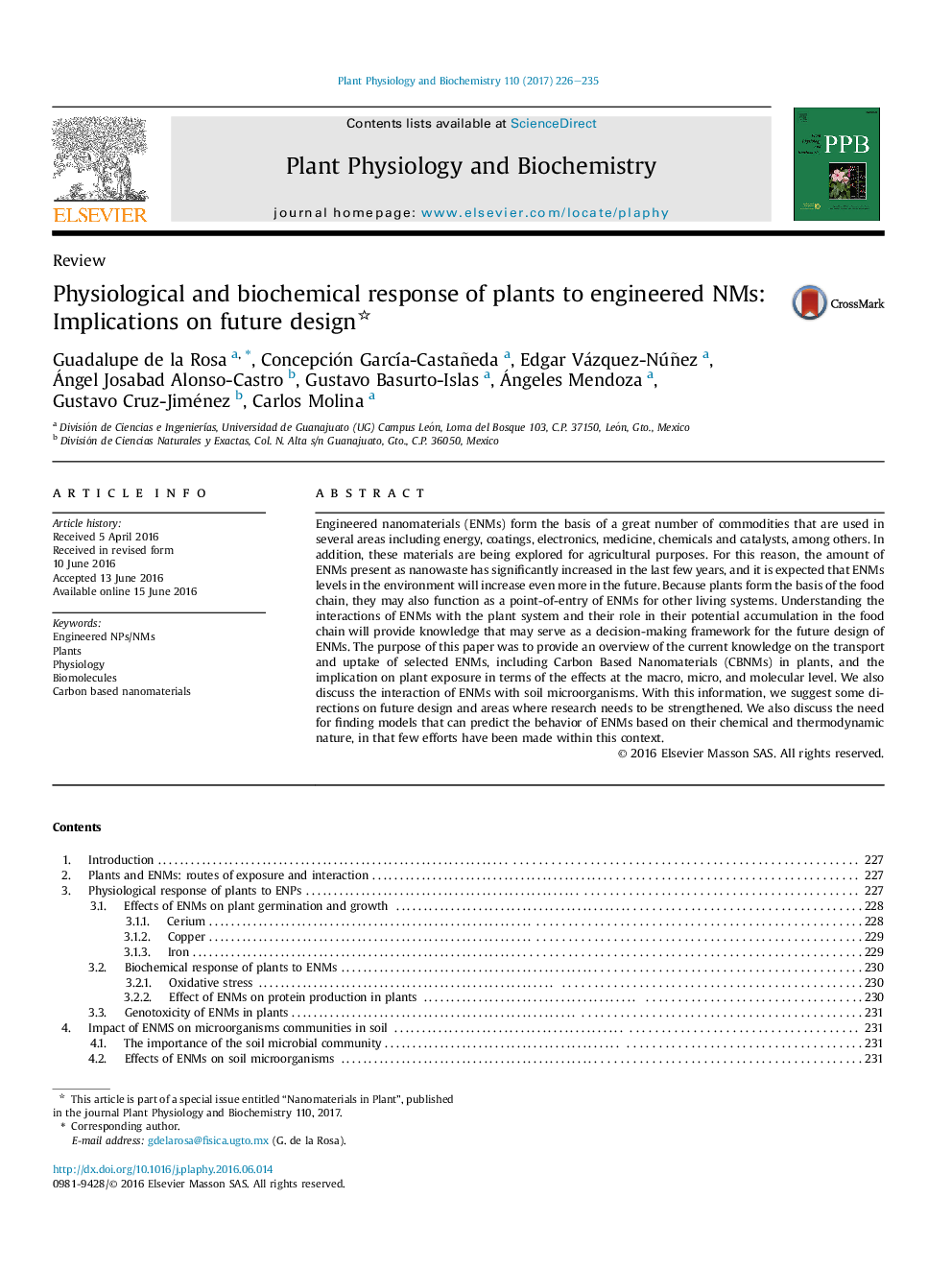| Article ID | Journal | Published Year | Pages | File Type |
|---|---|---|---|---|
| 5515343 | Plant Physiology and Biochemistry | 2017 | 10 Pages |
â¢Future ENMs design should consider surface properties.â¢Particle size should be considered in chemically stable ENMs.â¢In future design of CBNMs, inclusion of bioactive functional groups is suggested.â¢Models considering ENMs chemical and thermodynamic nature are needed.
Engineered nanomaterials (ENMs) form the basis of a great number of commodities that are used in several areas including energy, coatings, electronics, medicine, chemicals and catalysts, among others. In addition, these materials are being explored for agricultural purposes. For this reason, the amount of ENMs present as nanowaste has significantly increased in the last few years, and it is expected that ENMs levels in the environment will increase even more in the future. Because plants form the basis of the food chain, they may also function as a point-of-entry of ENMs for other living systems. Understanding the interactions of ENMs with the plant system and their role in their potential accumulation in the food chain will provide knowledge that may serve as a decision-making framework for the future design of ENMs. The purpose of this paper was to provide an overview of the current knowledge on the transport and uptake of selected ENMs, including Carbon Based Nanomaterials (CBNMs) in plants, and the implication on plant exposure in terms of the effects at the macro, micro, and molecular level. We also discuss the interaction of ENMs with soil microorganisms. With this information, we suggest some directions on future design and areas where research needs to be strengthened. We also discuss the need for finding models that can predict the behavior of ENMs based on their chemical and thermodynamic nature, in that few efforts have been made within this context.
